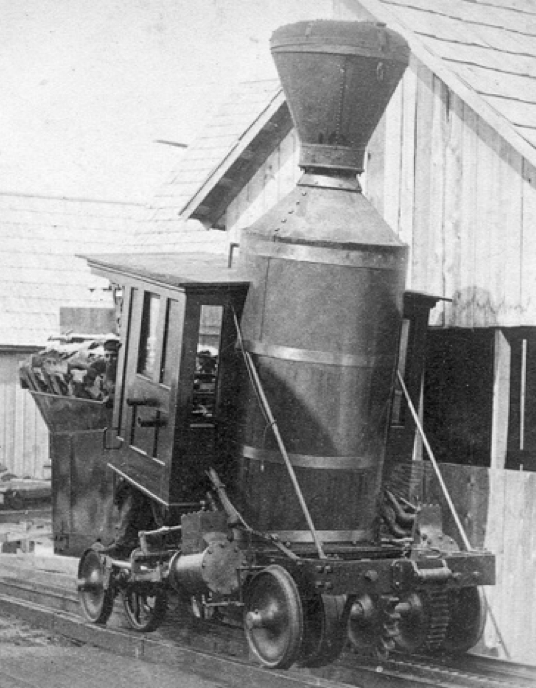The torch is…taken?
Walter Aiken, Railway President (1884–1893)
Locomotive #2, Geo Stephenson, built by Aiken in 1869
“I built the first engine and quite a piece of the road before Mr. Aiken knew anything about it…he has always been jealous… ”
- Sylvester Marsh, in a letter to Emmons Raymond, 1878
In an interview prior to the completion of his railway, Sylvester Marsh clearly expressed his vision: passengers could board a train in New York, “and with one change of trains, see the sun rise in Gotham one day, and from the summit of Mount Washington the next”. For that vision to be realized, the Boston, Concord & Montreal’s line would be extended 25 miles from its terminal in Littleton to the Cog’s base station and a large new hotel nearby. But by joining forces with the BC&M, direct leadership of his mountain-climbing Railway would eventually be wrested from him.
Against Marsh’s advice, Franklin, NH machinist Walter Aiken, related by marriage to the BC&M’s General Manager Joseph A. Dodge, was commissioned to build and then rebuild a new vertical-boilered work engine (#2, Geo. Stephenson) and three passenger locomotives. Even though Aiken’s locomotives would be scrapped in favor of a new horizontal boiler design, his familial loyalty to BC&M management would result in his appointment as Cog Railway manager and, at Marsh’s death in 1884, its President.
As consequential as Aiken’s leadership was in terms of the Railway’s early growth in an era of rapidly expanding rail travel and tourism in northern New England, it was not without considerable controversy. In a self-penned article in Among the Clouds in 1877, he attempted to re-write the Cog’s origin story. He placed his father Herrick and himself in the founders’ position rightfully occupied by Marsh, who responded in 1878 with the quote above. “This I care very little about,” he continued, ‘since I have lost both my sons [cruelly, due to illness, within 2 months of each other] and I shall have no one to reap the advantage I may be entitled to.” Easily available records proved Aiken’s claim chronologically impossible, but a grief-stricken Marsh had already withdrawn from any further involvement with his Railway. He died in Concord in 1884. Aiken led the railway until his death in 1893.
———
Retired Boston architect and Smith College professor Dick Joslin’s wonderful story of his great-grandfather’s life and creation, Sylvester Marsh and the Cog Railway, is available in our gift shop, online or in person.
Railway historian Tim Lewis has compiled detailed contemporaneous accounts of the transitional years of 1885–93 from Marsh to Aiken, and the BC&M’s management of the Cog Railway, available here.




